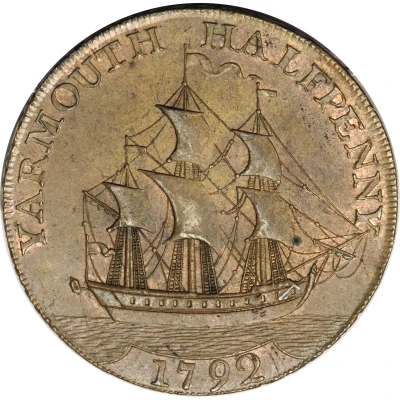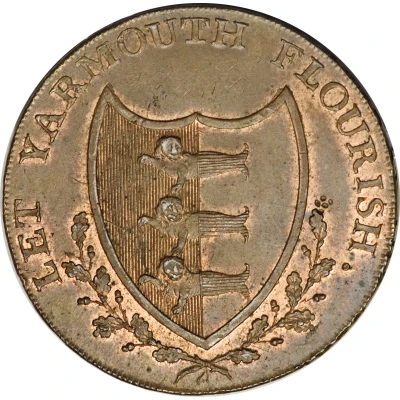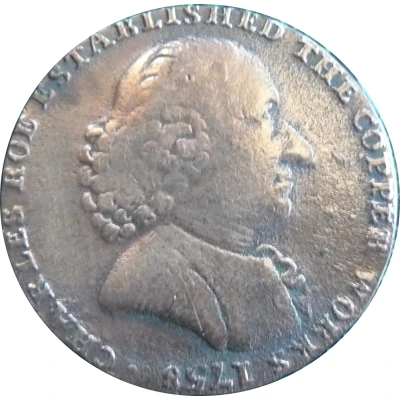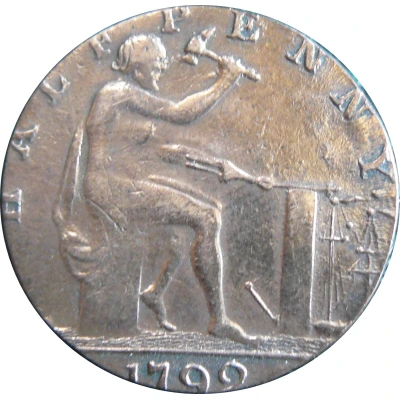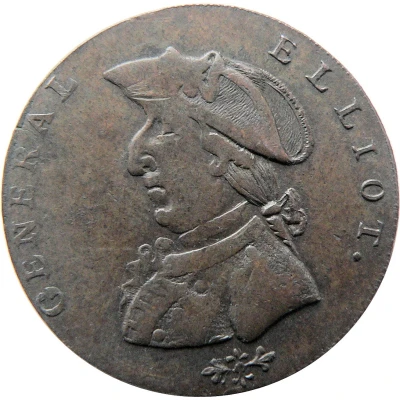
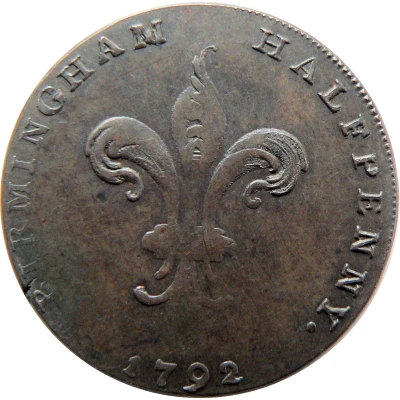

© ZacUK
½ Penny Warwickshire - Birmingham / General Elliot
1792 year| Copper | 11.32 g | 30 mm |
| Issuer | United Kingdom (United Kingdom, British Overseas Territories and Crown Dependencies) |
|---|---|
| Type | Token |
| Year | 1792 |
| Value | ½ Penny (1⁄480) |
| Currency | Conder tokens (1787-1797) |
| Composition | Copper |
| Weight | 11.32 g |
| Diameter | 30 mm |
| Thickness | 1 mm |
| Shape | Round |
| Technique | Milled |
| Orientation | Coin alignment ↑↓ |
| Demonetized | Yes |
| Updated | 2024-10-09 |
| Numista | N#109166 |
|---|---|
| Rarity index | 90% |
Reverse
Central fleur-de-lys. Lettering around, date below, toothed border
Script: Latin
Lettering:
BIRMINGHAM HALFPENNY.
1792
Edge
Inscribed
NOTE: plain variety is on a smaller, thinner flan
Lettering: PAYABLE AT HENRY BIGGS MOORE STREET
Comment
General George Augustus Eliott, 1st Baron Heathfield (December 1717 - July 1790) was a British Army officer who served in three major wars during the 18th century. He rose to distinction during the Seven Year’ War, but is most noted for his command of the Gibraltar garrison during the Great Siege of Gibraltar (1779-1783) during the American War of Independence where he was celebrated for his successful defence of the fortress. General Eliott has thus been commemorated on a Gibraltar £1 banknote, and his portrait has appeared since 1995 on the £10 notes issued by the Government of Gibraltar; his marble monument and statue exist in the south transept of St Paul’s Cathedral in London.A different token has same obverse, with a reverse with JS monogram for John Skidmore (DH 224b).
Interesting fact
One interesting fact about the Token ½ Penny (Warwickshire - Birmingham / General Elliot) 1792 from United Kingdom is that it was issued during a time of severe coinage shortages in the late 18th century. The British government was unable to produce enough coins to meet the demands of the growing economy, leading to the issuance of private tokens, like this one, by local merchants and traders. These tokens were used as a substitute for official currency and were often backed by the merchant's own credit. This particular token was issued by General Elliot, a prominent merchant in Birmingham, and features an image of a shield with the initials "G.E." on one side and the value "1/2P" on the other. Despite being issued by a private entity, these tokens were widely accepted and played an important role in facilitating trade and commerce during this time.
